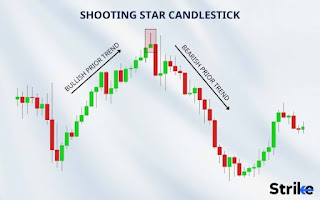The Shooting Star Candlestick Pattern
.jpeg)
.jpeg)
**10 Best Strategies for Effective Trading**
Trading can be a highly rewarding but equally challenging endeavor. To navigate the complexities of the financial markets, traders need a well-rounded approach and a robust strategy. Here are ten of the best strategies to enhance your trading success:
### 1. **Develop a Trading Plan**
A comprehensive trading plan is essential. It should include your goals, risk tolerance, trading methods, and criteria for entering and exiting trades. A solid plan helps maintain discipline and consistency.
### 2. **Conduct Thorough Research**
Stay informed about the assets you trade, whether they are stocks, currencies, or commodities. Fundamental and technical analysis can provide insights into market trends and potential trading opportunities.
### 3. **Implement Risk Management**
Effective risk management is crucial to long-term success. Use stop-loss orders to limit potential losses and never risk more than a small percentage of your trading capital on a single trade.
### 4. **Diversify Your Portfolio**
Diversification helps spread risk across different assets or markets. By not putting all your eggs in one basket, you can protect your portfolio from significant losses if one asset underperforms.
### 5. **Stay Informed About Market Conditions**
Keep an eye on economic indicators, news events, and geopolitical developments. Market conditions can change rapidly, and staying informed allows you to adjust your strategy accordingly.
### 6. **Use Technical Analysis Tools**
Technical analysis involves studying price charts and using indicators like moving averages, relative strength index (RSI), and Bollinger Bands. These tools help identify trends and potential entry and exit points.
### 7. **Adopt a Trading Style That Suits You**
Whether you prefer day trading, swing trading, or long-term investing, choose a style that aligns with your personality, schedule, and risk tolerance. Sticking to a style that suits you can lead to more consistent results.
### 8. **Practice Patience and Discipline**
Successful trading requires patience and the discipline to stick to your trading plan. Avoid impulsive decisions based on emotions or market noise. Sometimes, the best action is to wait for the right opportunity.
### 9. **Continuously Learn and Adapt**
The financial markets are constantly evolving. Stay open to learning new strategies and techniques, and be willing to adapt your approach based on what you learn and changing market conditions.
### 10. **Leverage Technology and Tools**
Take advantage of trading platforms, charting software, and other tools that can help streamline your trading process. Automated trading systems and algorithms can also assist in executing trades more efficiently.
### Conclusion
Effective trading combines knowledge, strategy, and discipline. By implementing these ten strategies, you can enhance your trading skills and increase your chances of success in the financial markets. Remember, trading is a marathon, not a sprint, and staying committed to your plan and continually improving your approach are keys to long-term profitability. 🚀
Comments
Post a Comment